State Fencing's Wooden Fences: Classic and Natural Fencing in Baton Rouge
Timeless Beauty of Wood Fences
- Picket Fences
- Privacy Fences
- Split Rail Fences
- Board on Board Fences
- Shadowbox Fences
Types of Wood Fences
Installation Tips
Before installing a wood fence, check local zoning laws and homeowners association guidelines to ensure compliance. Consider hiring a professional to handle the installation, as they can provide guarantees on craftsmanship and help navigate any potential issues with terrain or measurement.
Maintenance and Care
To extend the life of your wood fence, regular maintenance is critical. This includes cleaning, staining, or painting the wood every few years to prevent rot and weather damage.
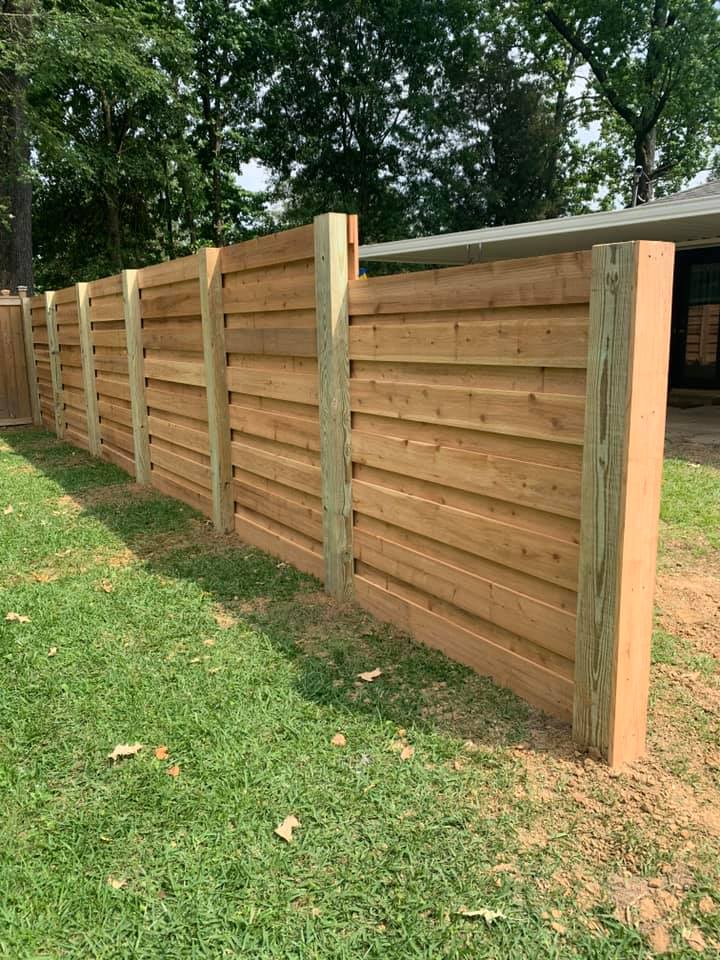
Picket Fences
Description:
Picket fences are one of the most iconic types of wood fencing, known for their spaced vertical boards or “pickets” that are attached to horizontal rails. These fences are traditionally used to adorn front yards, providing a charming boundary that enhances the home’s curb appeal without obstructing views.
Uses:
Ideal for residential areas, picket fences are commonly installed around gardens, along pathways, and as decorative perimeters that do not necessarily need to provide privacy or high security.
Benefits:
Adds a decorative touch to properties. Suitable for enclosing areas for pets and children without completely blocking sight lines. Relatively easy to install and customize the fence with various heights and styles.
Maintenance Tips:
Picket fences require regular painting or staining to maintain their appearance and protect the wood from weathering.
Inspect periodically for loose or broken pickets and repair the fence promptly to keep the fence in good condition.
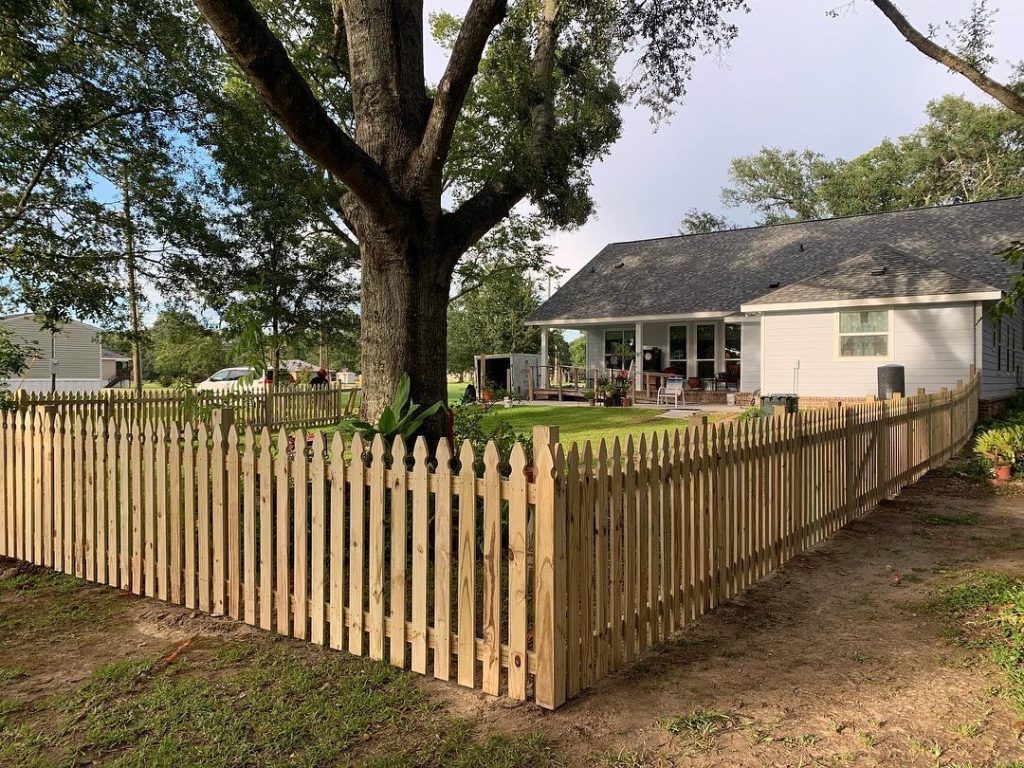
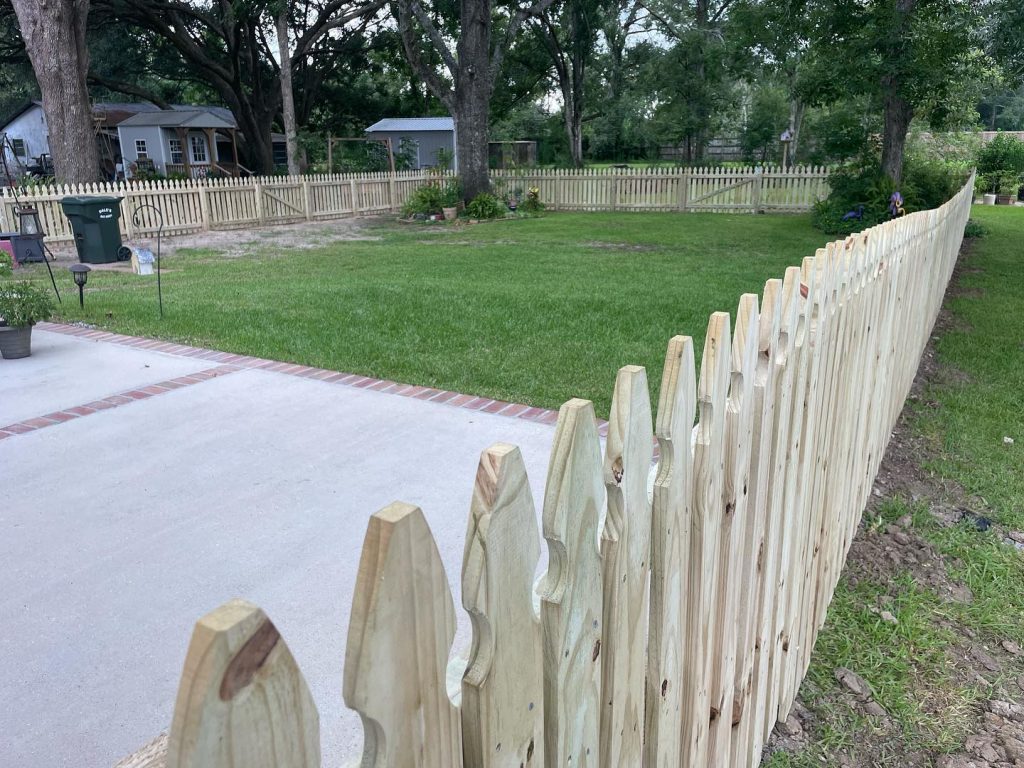
Privacy Fences
Description:
Privacy fences are tall, ranging from 6 to 8 feet, and constructed with boards installed tightly together to prevent outsiders from looking into the property. They offer a solid barrier that ensures privacy in your backyard or any space where you require seclusion.
Uses:
These fences are prevalent in residential backyards, around swimming pools, or in commercial areas where privacy from passersby is essential.
Benefits:
Provides complete privacy, making it ideal for backyards. Helps reduce noise pollution from the surrounding environment. Adds substantial value to the property due to its functionality and aesthetic
Maintenance Tips:
Regular staining or sealing is necessary to protect against moisture and UV damage.
Check for signs of rot or insect damage, especially near the ground, and replace affected sections as needed.

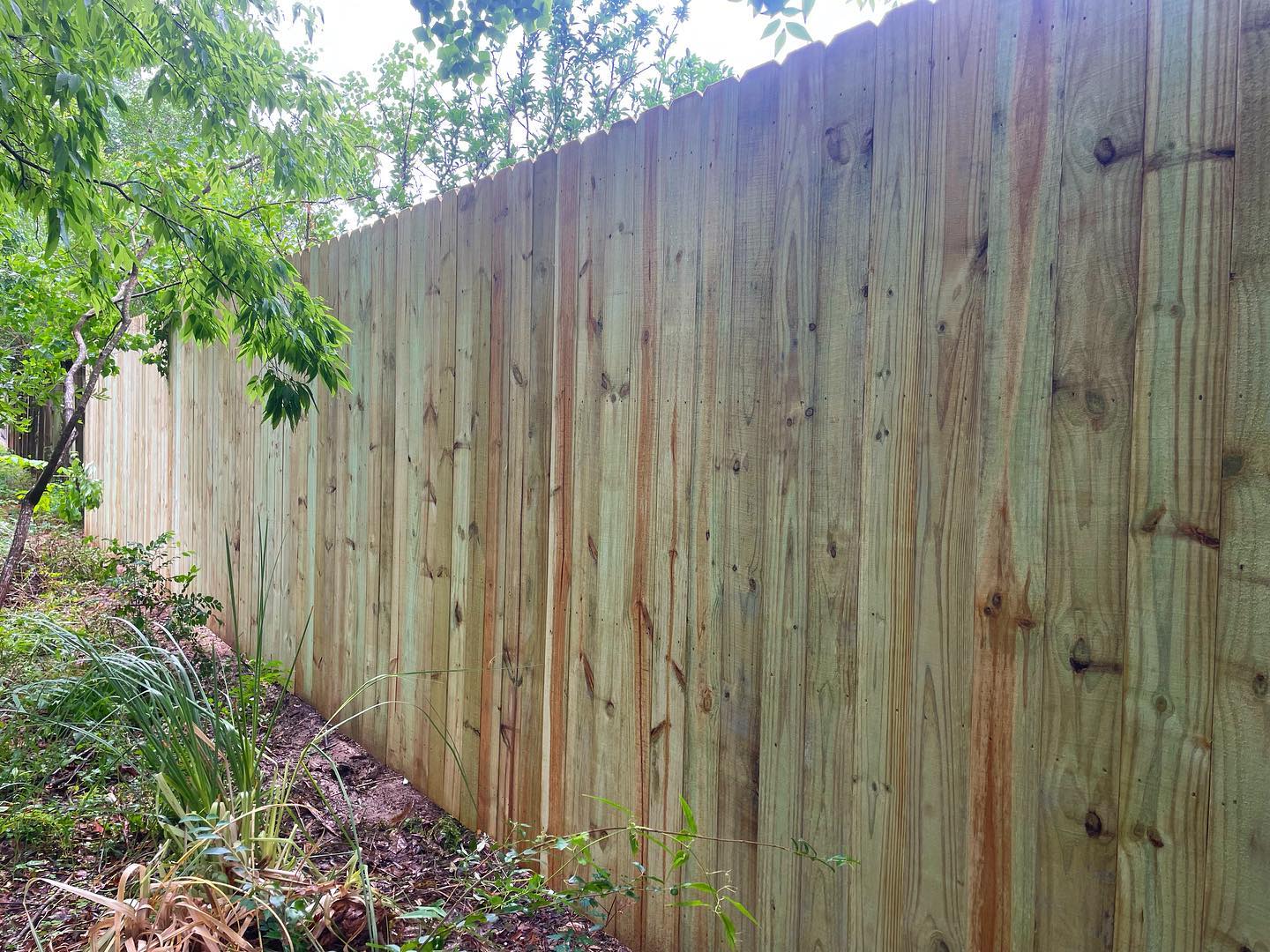
Split Rail Fences
Description:
Split rail fences are characterized by their rustic look, featuring two or more horizontal rails inserted into notched posts. Commonly made from pine or cedar, these fences are a traditional choice in rural settings and large properties.
Uses:
Ideal for larger areas where the main purpose is to define boundaries without obstructing views, such as farms, ranches, and large residential properties.
Benefits:
Provides a clear property boundary while maintaining an open feel. Relatively low material cost due to minimal wood use. Quick and easy installation.
Maintenance Tips:
Regular staining or painting is required to maintain durability and appearance.
Inspect the fence periodically for loose boards and secure them to prevent gaps.
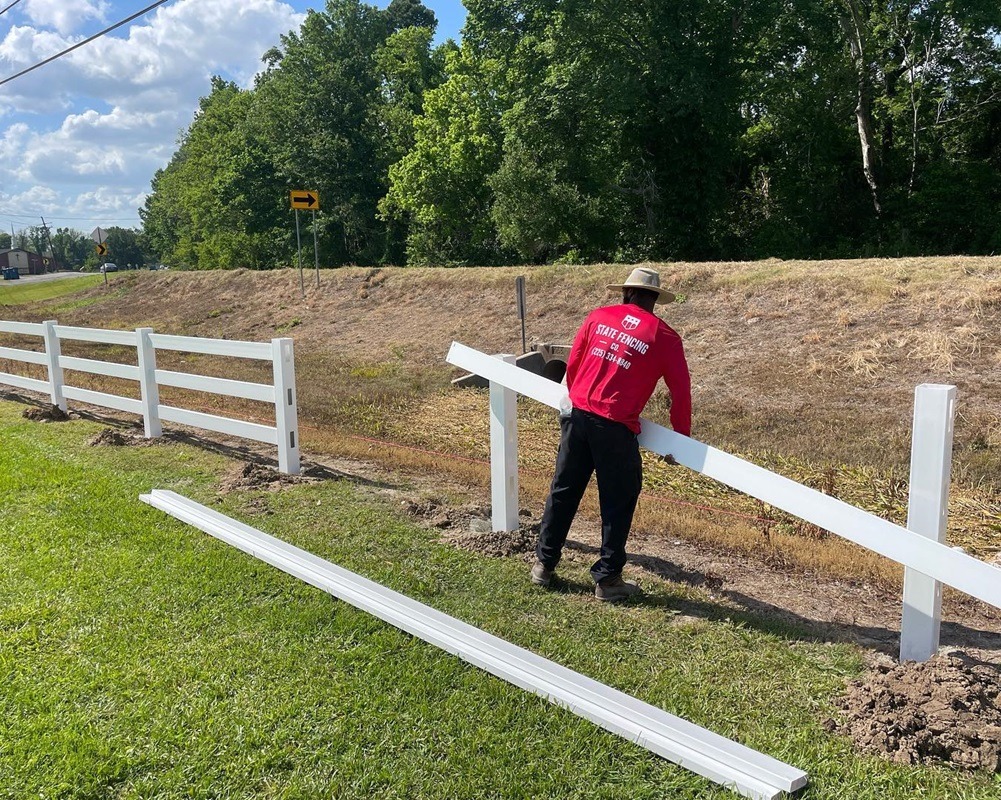
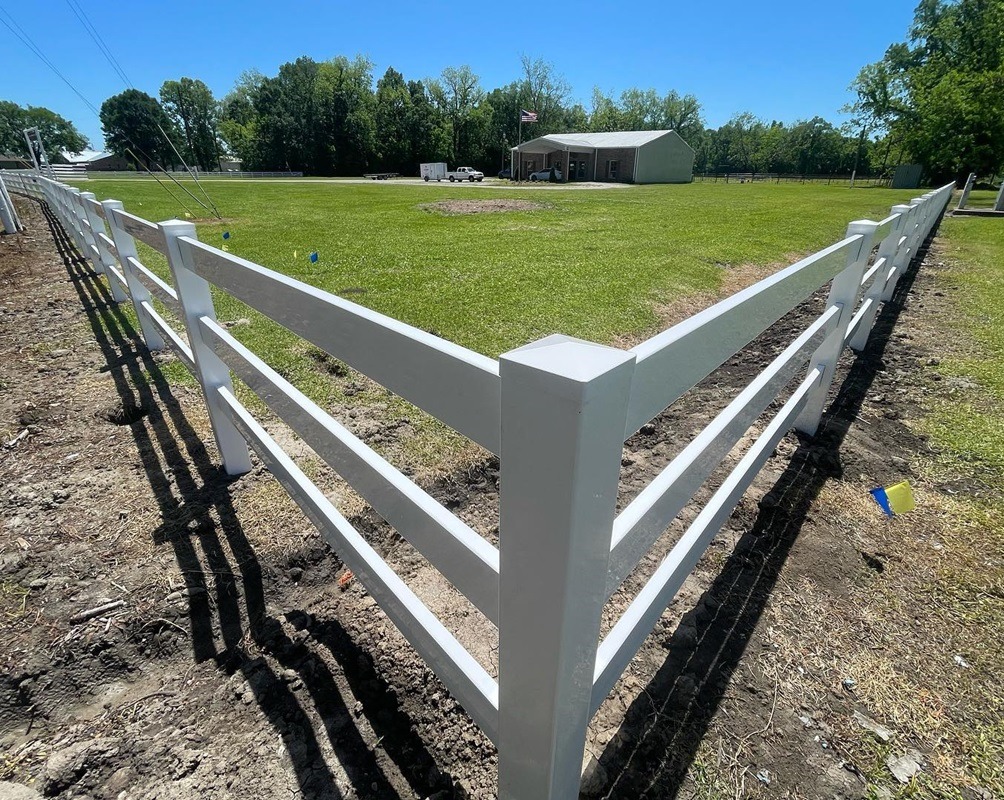
Board on Board Fences
Description:
Board on board fences offer a unique design where wooden boards overlap, creating a full privacy effect while allowing air to circulate. This layering not only ensures privacy but also adds a decorative depth to the fence’s appearance.
Uses:
Commonly used in residential properties where full privacy and a stylish look are desired.
Benefits:
Provides complete privacy even as the wood naturally contracts and expands. The overlapping design helps block wind, making it more durable against strong winds. Aesthetically versatile, fitting well with both traditional and contemporary house styles.
Maintenance Tips:
Regular staining or painting is required to maintain durability and appearance.
Inspect the fence periodically for loose boards and secure them to prevent gaps.

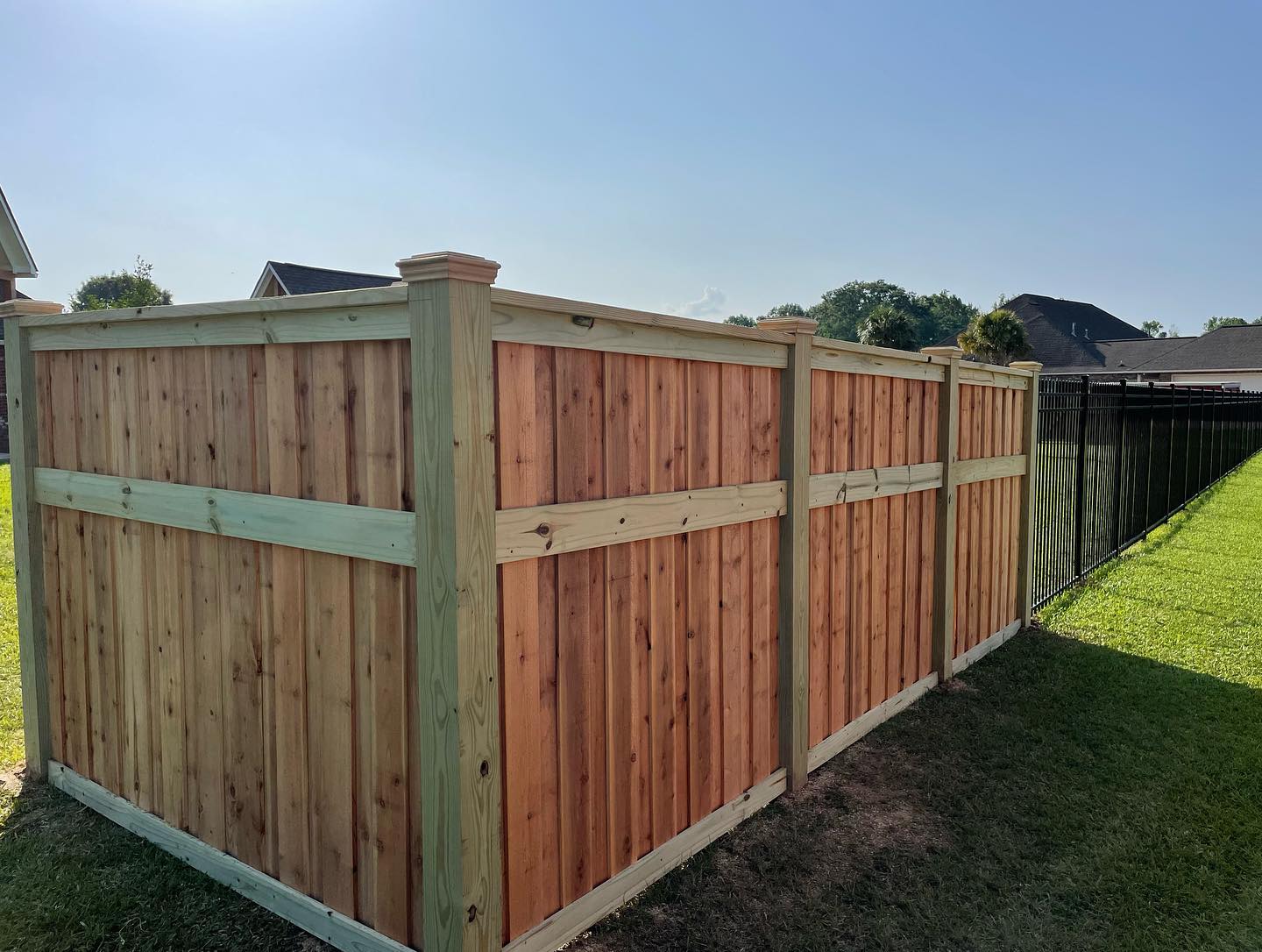
Choosing the Right Wood Type
When selecting the wood for your fence, consider the climate, soil type, and the specific needs of your property. Here are some popular choices:
- Cedar: Naturally resistant to rot and decay, making it a durable choice without the need for extensive chemical treatments.
- Pressure-Treated Pine: Treated to resist pests and decay, offering a cost-effective solution with enhanced durability.
| Wood Type | Aesthetic Appeal | Durability | Maintenance Needs | Cost | Best For |
|---|---|---|---|---|---|
| Cedar | High (Rich tones) | High (15-30 years) | Moderate (Staining required) | Higher | Privacy fences, decorative fences |
| Pine | Moderate (Lighter color) | Moderate (5-12 years) | High (Frequent treatments) | Lower | Economic fencing solutions |
| Pressure-Treated Wood | Moderate (Chemical treatment) | High (20+ years) | Moderate (Periodic sealing) | Moderate | Durable, cost-effective fencing |
